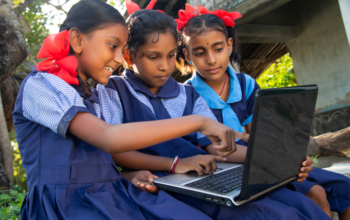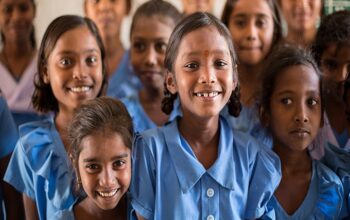Education has considerable positive effects on the improvement of incomes and it is the first factor of equity and inclusion.
At the individual level, it contributes to employment, income, health and poverty reduction, knowing that each additional year of schooling increases overall hourly earnings by 9% (a). At the societal level, education promotes long-term economic growth, stimulates innovation, strengthens institutions and consolidates social cohesion.
Developing countries have made extraordinary progress in terms of schooling and more and more children are going to school all over the world. However, as the World Development Report 2018 pointed out , schooling is not synonymous with learning.
It is therefore crucial to invest wisely and effectively in the education of populations in order to develop the human capital essential to ending extreme poverty. This requires tackling the education crisis, ending learning poverty (a) and helping young people acquire the cognitive, social-emotional, technical and digital skills they need to succeed in today’s world.
The COVID-19 pandemic has turned the lives of children, students and young people upside down. The disorganization of societies and economies has deepened the global learning crisis and caused an unprecedented impact on education.
Among other dramatic disruptions, the pandemic has caused the worst education crisis in a century. Globally, schools remained closed for an average of 141 school days from February 2020 to February 2022. School closure periods were particularly long in South Asia (273 days) and Latin America-Caribbean (225 days).
Even before the pandemic, the global learning crisis was glaring. The Learning Poverty Indicator (a), developed by the World Bank and the UNESCO Institute for Statistics in 2019, provides a simple but telling measure of the scale of this crisis: the alarming proportion of 10-year-olds unable to read and understand a short, age-appropriate text.
In low- and middle-income countries, the proportion of children in learning poverty (a), which was already 57% before COVID, could rise to 70% due to prolonged school closures and the inability of distance education to address this due to strong digital divides, jeopardizing the targets of the 4th Sustainable Development Goal (SDG 4) . It is estimated that since the onset of the COVID-19 pandemic and subsequent lockdowns, schoolchildren have lost some 2 trillion hours (a) of face-to-face instruction worldwide.
In most countries, younger generations have suffered considerable learning losses during the pandemic. Rigorous empirical data point to very significant losses in all regions of the world and at all income levels (low-, middle- and high-income economies). For every month that schools were closed, students lost an entire month of learning, which speaks to the (globally) limited effectiveness of distance learning.
And the disastrous effects of school closures go beyond just learning: this generation of children now stands to lose $21 trillion in lifetime earnings in present value terms (equivalent to 17% of global GDP), a projection that far exceeds estimates of $17 trillion published in 2021.
COVID-19 has led to a catastrophic widening of inequalities. While almost all countries have provided, to varying degrees, distance education during the closure of classes, access to and use of these alternatives has given rise to strong inequalities., both within and between countries. Children from disadvantaged households have been more penalized, often due to a lack of access to electricity, the internet and equipment, but also a lack of family support. Girls, students with disabilities and young children also found it much more difficult to continue their learning. At least a third of students , or 463 million children worldwide, did not have access to distance learning when schools were closed.
The pandemic has also had deleterious effects on the mental health of children and led to an increased risk of violence, early marriage and child labour. The situation is grimmer for girls, due to their greater vulnerability to violence, early marriage and teenage pregnancy. Vulnerable groups — children with disabilities, ethnic minorities, refugees or displaced people — are also less likely to return to school after the crisis.
Young children have particularly suffered from school interruptions. In many countries, early childhood education facilities have seen the most prolonged closures, with little or no opportunity for remote learning.
In addition to learning losses, the interruption of schooling has also accentuated inequalities in nutrition, health and stimulation, as well as in access to social safety nets and essential psychosocial services. Millions more children were exposed to the risks of child labour, early marriage and school dropout.
Added to these difficulties are the negative effects of a generalized and unprecedented economic contraction: not only does this recession weigh on family incomes and increase the risk of dropping out of school, but it also limits countries’ budgetary resources and leads to tensions on public spending on education.
Young people have also suffered a loss of human capital linked to declining skills and employment. In many countries, employment declines have been twice as large among young people as among older people. Consequently, this generation of students, and in particular the most disadvantaged, may never reach their full potential in terms of education and income.
We must act now to remedy these losses, knowing that we will not be able to simply resume things as before if we are to erase the consequences of the pandemic and give the impetus necessary for an acceleration of the progress essential to achieve achieve the ambitions of SDG 4. The World Bank Group calls on governments to implement ambitious and vigorous programs to get children back to school, address learning losses and Accelerate progress by building better, more equitable and more resilient education systems.




